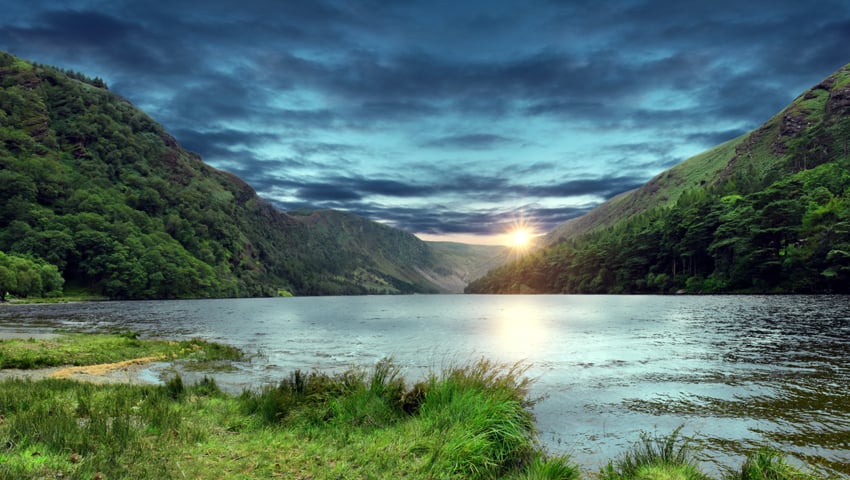NatureScot responds to Community Land Scotland’s report, The Credibility Gap for Green Finance
WE’RE IN a nature/climate crisis, and it’s time for radical and urgent action to tackle these issues in Scotland.
It is clear that public funding alone cannot tackle the climate change and biodiversity crisis we currently face. Responsible, private finance is one, crucial way that we can meet Net Zero. That’s why we are working with the Scottish Government and others to help build a new market for values led, high integrity, private investment in Scotland’s nature that benefits Scotland’s people and communities.
This is a new area of policy in Scotland. We welcome discussion about how best to deliver this new market, and the recent report from Community Land Scotland makes some useful points about the estimated costs of nature restoration.
Watch our interview with Brendan Turvey from NatureScot
The Scottish Government has already invested significant sums into nature, including £65 million through the Nature Restoration Fund and £250 million through Peatland Action. But we recognise that additional private investment will also be required to meet our policy goals.
Current public funding levels will not deliver the targets in the Climate Change Plan and recently published Scottish Biodiversity Strategy. For example, we’ve estimated that it will cost between £3 and £4billion to restore all 1.3 million hectares of degraded peatland in Scotland, and we have a current budget of £250 million.
The figure of £20 billion in the Green Finance Institute (GFI) report is an estimate indicating the scale of investment likely to be required to deliver the nature restoration requirements of Net Zero. While this figure is not intended, or being used to drive policy or investment decisions, it is an important indication of the scale of the financial challenge.
The report from Community Land Scotland challenges some of the assumptions in the GFI report and we will leave it to GFI to comment on these. Land acquisition (the cost of which is reflected in the report from GFI) is not part of the model we are developing with our own investment partners. In that regard we agree that the £20bn figure may be an over estimate.
Given the complexity and unprecedented scale of the nature restoration required, it is almost impossible to estimate the true costs of this activity. We’ve never done this at scale before, and the costs involved in delivery are highly variable. The cost of creating woodland, for example, is highly variable depending on location, species mix, the density of planting and the methods used.
We agree with Community Land Scotland that there are risks in creating a new market in natural capital. The purpose of the pilot project with our partners Hampden and co, Lombard Odier and Palladium is to see if we can demonstrate a model that both secures new opportunities and addresses those risks, by delivering responsible investment that can help deliver a just transition to net zero.
The interim principles for responsible investment, published by Scottish Ministers in March 2022, are embedded in the [memorandum of understanding] we have signed with our partners and our goal is to develop a new model which delivers against them.
Our partners are keen to work with community and NGO land owners and this may provide an opportunity to bring new investment to community/charitably owned land, alongside land in private ownership. Land acquisition is not part of the model we are developing, but we will support communities if opportunities to acquire land arise from the projects. We are keen to work with Community Land Scotland to do that and we have a workshop planned with them to discuss this opportunity further.
We agree with the report that we don’t yet know whether there will be demand from land managers for £2bn of private investment and we are using the pilot to test that out. We also agree that many land managers may decide to fund woodland creation themselves or through the existing forest grant scheme (FGS). But we must find, and test out, new ways of financing woodland creation in addition to the FGS.
What we are testing through the pilot is whether the provision of additional private capital can both speed up and scale up the delivery of woodland creation, alongside peatland restoration and investment in other habitats. We may find that the continued use of the FGS and other grant schemes is the preferred route to delivery for land managers, but our job is to explore other options to speed up delivery on the ground.
The target of net zero by 2045 is not very far away in the context of nature-based solutions which take time to deliver carbon savings. We need to act urgently to scale up nature restoration, to put us on a pathway to net zero. In any approach to climate change mitigation and adaptation, nature based solutions that absorb carbon from the atmosphere, reduce flood risk, reduce water scarcity and support our biodiversity are an essential component of the journey to net zero.
Brendan Turvey, Low Carbon Project Manager at NatureScot said: “This is a new market for Scotland. The aim of our pilot with Hampden, Lombard Odier and Palladium is to test out a new approach to investment through the carbon market which can deliver responsible investment at scale, and which can deliver real benefits for communities and the Scottish economy.”
“We’re keen to work with communities and community land owners to shape that investment and we will be engaging with communities in the first pilot area soon.”
